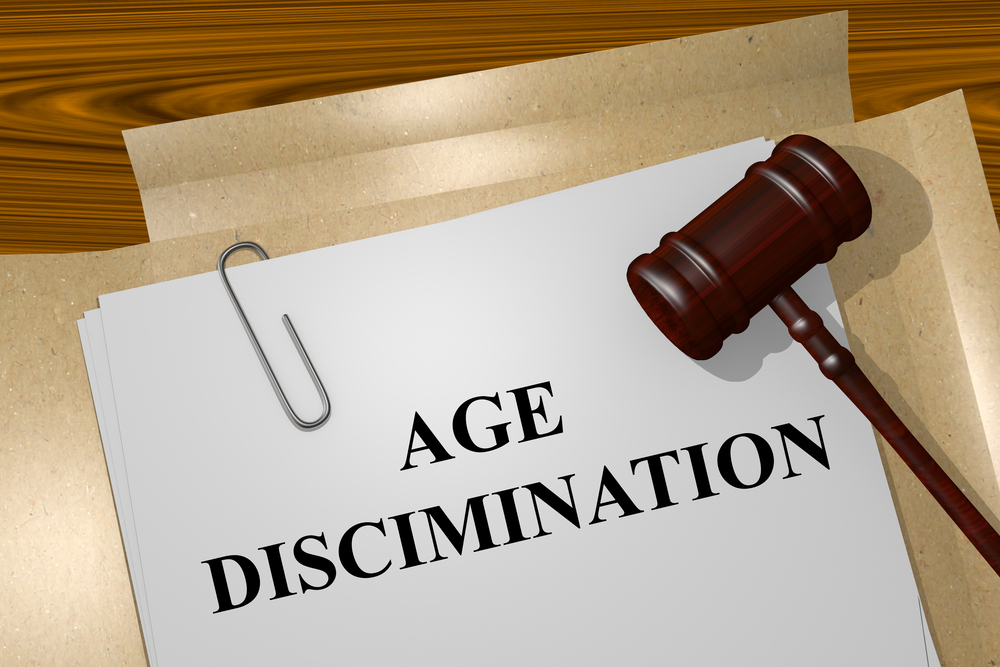
Many federal and state laws like the Age Discrimination in Employment Act prohibit discrimination on the basis of age when the alleged aggrieved party is age 40 or older. Rather than going through an expensive and time-consuming process, many parties agree to participate in mediation.
Mediation is an alternative to the litigation system. This informal process involves using a trained mediator who is tasked with assisting the parties to reach a mutually satisfactory agreement after a claim of discrimination or harassment is made. The mediator is not a judge or arbitrator; he or she does not impose a decision on the parties. Instead, he or she helps the parties reach a negotiated settlement and reconcile their differences.
Mediation can be scheduled early in the process before the parties become grounded in their adversarial positions. This allows them to resolve misunderstandings, clarify issues and explore options to resolve the matter before incurring significant legal expenses or negative ramifications because of the dispute. The mediation process involves the parties working together to satisfy their mutual goals.
The parties may be separated during part of the process during which time the mediator will discuss the weaknesses of their legal position and the potential consequences of continued litigation. This helps the parties have a better understanding of the stakes involved in their case and the real consequences of not reaching an agreement on their own terms.
In mediation, the parties are welcome to reach any agreement that is legal. They are not stunted by the limited remedies available in court. This factor may help them to agree to implementing new policies, reinstating a worker, transferring a worker or using some other creative solution to solve the problem.







 If someone at your company has spoken to you about possibly retiring it could be a sign of discrimination. Offering someone a retirement package is not automatically discrimination, but if you feel forced to take the package or you are penalized for opting out of the package and staying in your position, it is discrimination. It is also illegal for companies to enact a mandatory retirement age unless it’s a specific field, such as law enforcement.
If someone at your company has spoken to you about possibly retiring it could be a sign of discrimination. Offering someone a retirement package is not automatically discrimination, but if you feel forced to take the package or you are penalized for opting out of the package and staying in your position, it is discrimination. It is also illegal for companies to enact a mandatory retirement age unless it’s a specific field, such as law enforcement.
 Mediation is an entirely confidential process, which can be especially beneficial for businesses hoping to protect their reputations. Nothing discussed in mediation can later be used against either party in litigation and nothing is made public unless the parties both agree to release the information. The agreement can even be confidential if the parties so choose.
Mediation is an entirely confidential process, which can be especially beneficial for businesses hoping to protect their reputations. Nothing discussed in mediation can later be used against either party in litigation and nothing is made public unless the parties both agree to release the information. The agreement can even be confidential if the parties so choose. Child abuse cases can be very challenging. They frequently include issues that pose challenges to effective prosecution including the lack of hard evidence. They typically do not have any third-party eyewitness testimony and can contain unambiguous medical or physical evidence. There might be delays in disclosing a crime, or contradictory or inconsistent statements and recantation given by victims.
Child abuse cases can be very challenging. They frequently include issues that pose challenges to effective prosecution including the lack of hard evidence. They typically do not have any third-party eyewitness testimony and can contain unambiguous medical or physical evidence. There might be delays in disclosing a crime, or contradictory or inconsistent statements and recantation given by victims. Allegations of child sexual abuse tend to be extremely complex to prosecute and to defend. These cases often require specialized knowledge about children’s reactions to sexual abuse, as well as proper forensic interviewing procedures. This is the only way for a jury to accurately weigh evidence in these cases. And despite most jurors having at least some accurate knowledge regarding specific issues of child sexual abuse, there are still a great many gaps in their knowledge. An expert witness can help to strengthen the case an attorney is presenting and make it easier for a jury to make an informed ruling.
Allegations of child sexual abuse tend to be extremely complex to prosecute and to defend. These cases often require specialized knowledge about children’s reactions to sexual abuse, as well as proper forensic interviewing procedures. This is the only way for a jury to accurately weigh evidence in these cases. And despite most jurors having at least some accurate knowledge regarding specific issues of child sexual abuse, there are still a great many gaps in their knowledge. An expert witness can help to strengthen the case an attorney is presenting and make it easier for a jury to make an informed ruling. Conflicts often involve a great deal of tension and emotion. This means it can be tough to think clearly and make smart decisions, even if you would usually be capable of acting reasonably. Conflict causes your high order mental processes to go haywire and cause you to have aggressive reactions that escalate a problem. The reason for this is feeling helpless and scared, but the outcome is a conflict that has spiraled out of control.
Conflicts often involve a great deal of tension and emotion. This means it can be tough to think clearly and make smart decisions, even if you would usually be capable of acting reasonably. Conflict causes your high order mental processes to go haywire and cause you to have aggressive reactions that escalate a problem. The reason for this is feeling helpless and scared, but the outcome is a conflict that has spiraled out of control. What are your deepest values and/or priorities? For instance, does one party value time while the other values money? Is one person looking for a strong bond that comes through honesty while the other just wants to avoid an argument, even if it means a shallower connection? Does someone value creativity while the other one value competency? Identifying priorities can help you determine each person’s point of view and can help you help each person understand themselves and their dispute partner better.
What are your deepest values and/or priorities? For instance, does one party value time while the other values money? Is one person looking for a strong bond that comes through honesty while the other just wants to avoid an argument, even if it means a shallower connection? Does someone value creativity while the other one value competency? Identifying priorities can help you determine each person’s point of view and can help you help each person understand themselves and their dispute partner better. The best way to avoid construction problems is to have clear contracts that set out the rights and responsibilities of both parties. Carefully read through the contracts and negotiate favorable terms in case a problem does arise.
The best way to avoid construction problems is to have clear contracts that set out the rights and responsibilities of both parties. Carefully read through the contracts and negotiate favorable terms in case a problem does arise. Some project managers make the mistake of pre-paying for work or paying too much for the amount of work that has been completed. Funds that are advanced should not exceed the value of work that has been completed.
Some project managers make the mistake of pre-paying for work or paying too much for the amount of work that has been completed. Funds that are advanced should not exceed the value of work that has been completed. If there are add-ons or change orders, be sure that you get these contract changes in writing. Your contract probably requires changes to be in writing, so be sure you follow this directive.
If there are add-ons or change orders, be sure that you get these contract changes in writing. Your contract probably requires changes to be in writing, so be sure you follow this directive. If you have a problem that cannot easily be resolved through direct communication or negotiation, mediation is an effective way to resolve disputes that arise during construction projects that allow the parties to maintain the contract and work together to resolve the problem. Selecting the right mediator is pivotal to the successful resolution of your case. Neil Robertson has extensive experience mediating construction and commercial matters and can help you resolve your dispute in an amicable manner.
If you have a problem that cannot easily be resolved through direct communication or negotiation, mediation is an effective way to resolve disputes that arise during construction projects that allow the parties to maintain the contract and work together to resolve the problem. Selecting the right mediator is pivotal to the successful resolution of your case. Neil Robertson has extensive experience mediating construction and commercial matters and can help you resolve your dispute in an amicable manner. One of the biggest benefits of mediation is the ability of the parties to create terms of an agreement that may not otherwise be available through litigation. For example, the parties may agree to modify the contract, agree to future business together or agree to use a particular subcontractor as a way to resolve the conflict. Keep an open mind and be flexible to get the most out of the mediation process.
One of the biggest benefits of mediation is the ability of the parties to create terms of an agreement that may not otherwise be available through litigation. For example, the parties may agree to modify the contract, agree to future business together or agree to use a particular subcontractor as a way to resolve the conflict. Keep an open mind and be flexible to get the most out of the mediation process. Family mediation continues to grow in popularity for couples that are divorcing and dealing with other legal disputes. The process makes it easier to resolve conflict and reach agreements about custody, financial matters, and other issues.
Family mediation continues to grow in popularity for couples that are divorcing and dealing with other legal disputes. The process makes it easier to resolve conflict and reach agreements about custody, financial matters, and other issues. The next step allows the mediator to familiarize him or herself with the situation. The mediator typically meets with each party individually and assesses whether mediation is suitable for the circumstance. The mediator will determine if both parties are entering mediation in good faith and whether they will be able to make headway. Mediation is a voluntary process, but this does not mean everyone will enter the process willing to negotiation. The part of the mediation might occur in a separate meeting or on the same day as the mediation but earlier.
The next step allows the mediator to familiarize him or herself with the situation. The mediator typically meets with each party individually and assesses whether mediation is suitable for the circumstance. The mediator will determine if both parties are entering mediation in good faith and whether they will be able to make headway. Mediation is a voluntary process, but this does not mean everyone will enter the process willing to negotiation. The part of the mediation might occur in a separate meeting or on the same day as the mediation but earlier. If mediation proves successful in resolving the family’s issues, the mediator will draft a record which summarizes the issues discussed and the resolutions decided upon. If mediation makes progress but has not fully resolved the matter, the mediator will document what was resolved and what is still outstanding for an upcoming session.
If mediation proves successful in resolving the family’s issues, the mediator will draft a record which summarizes the issues discussed and the resolutions decided upon. If mediation makes progress but has not fully resolved the matter, the mediator will document what was resolved and what is still outstanding for an upcoming session.